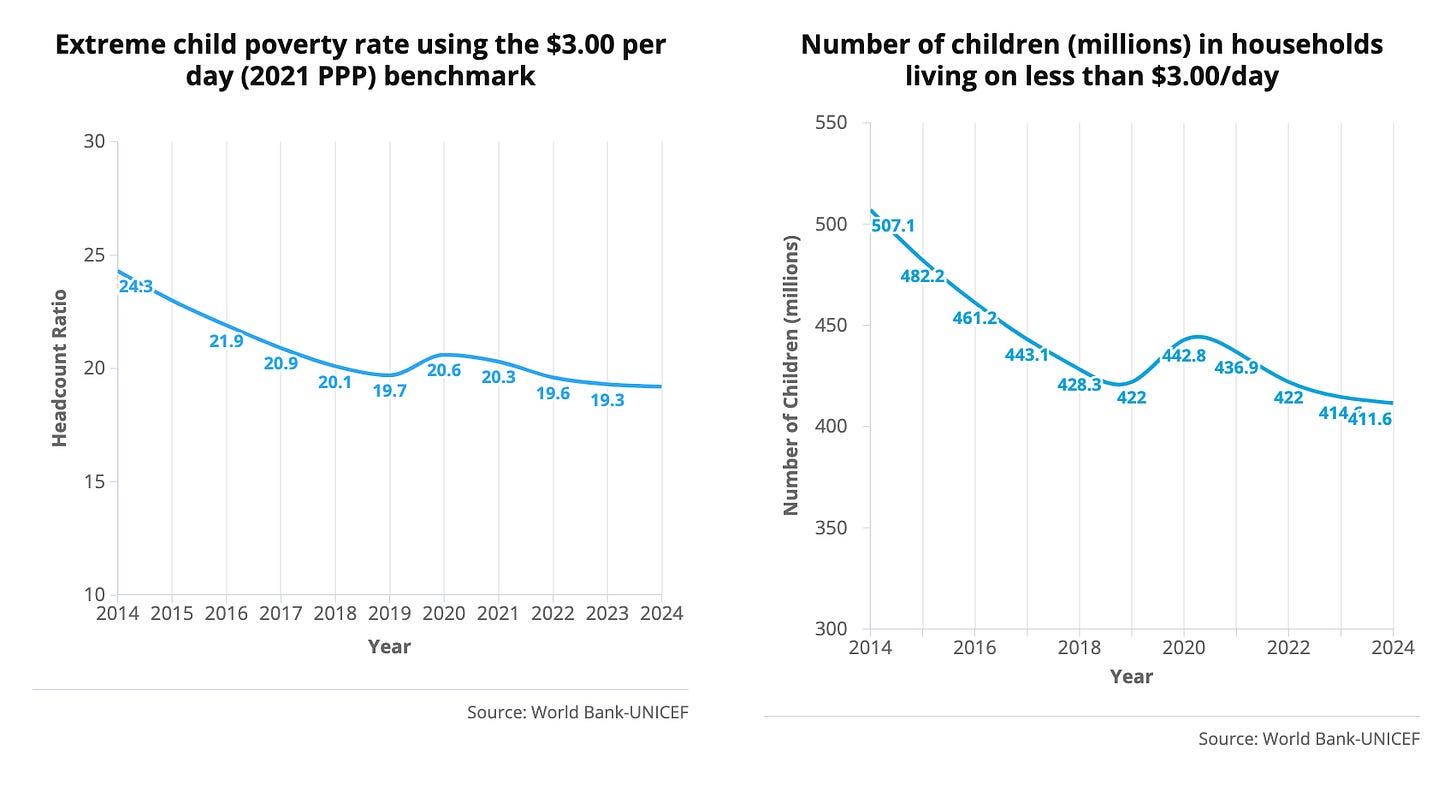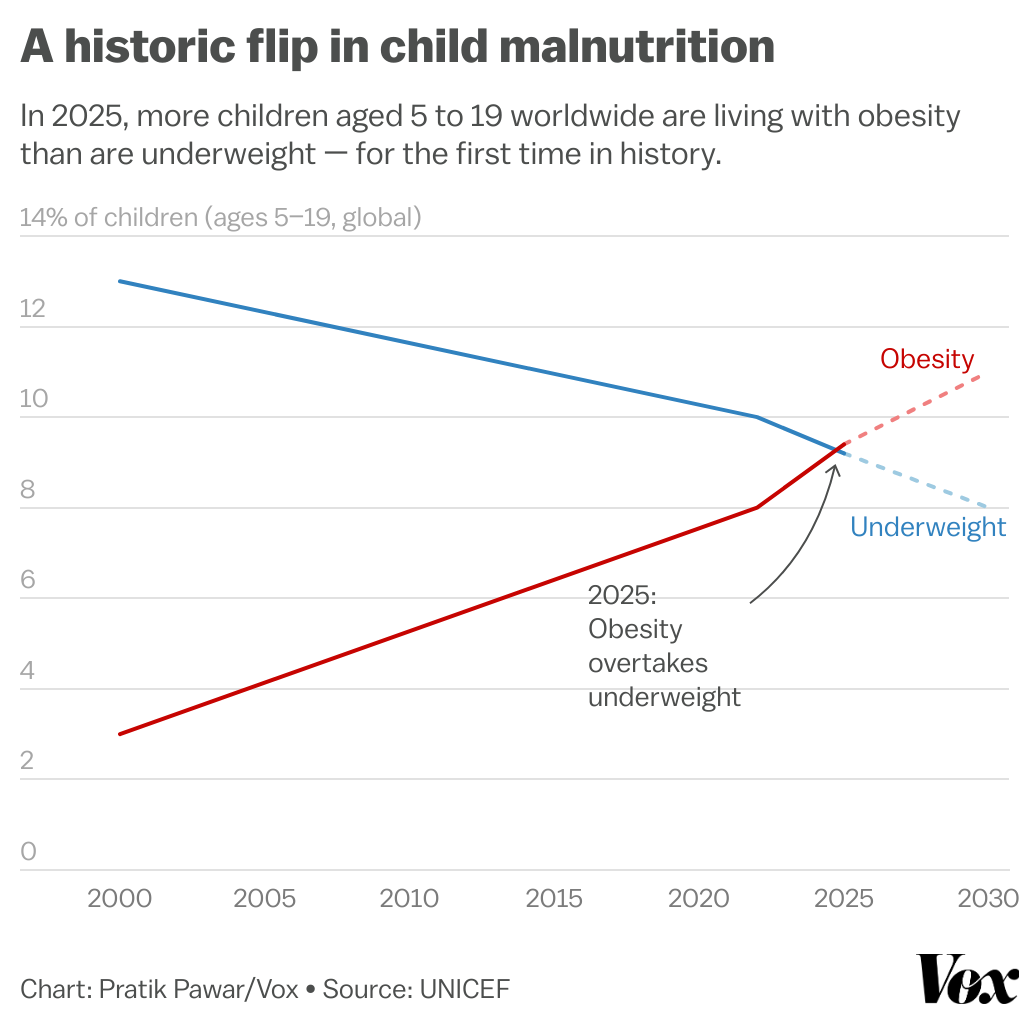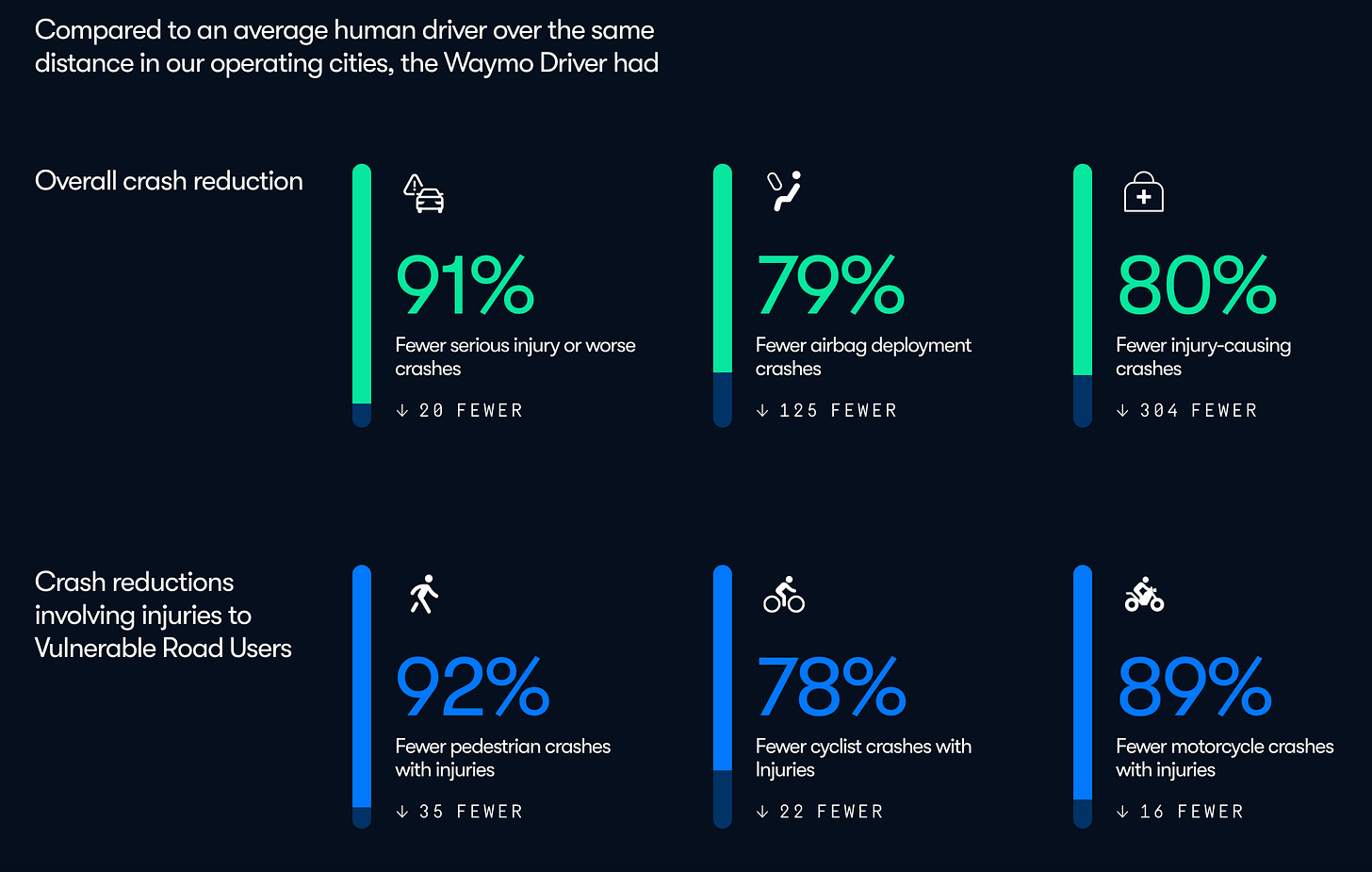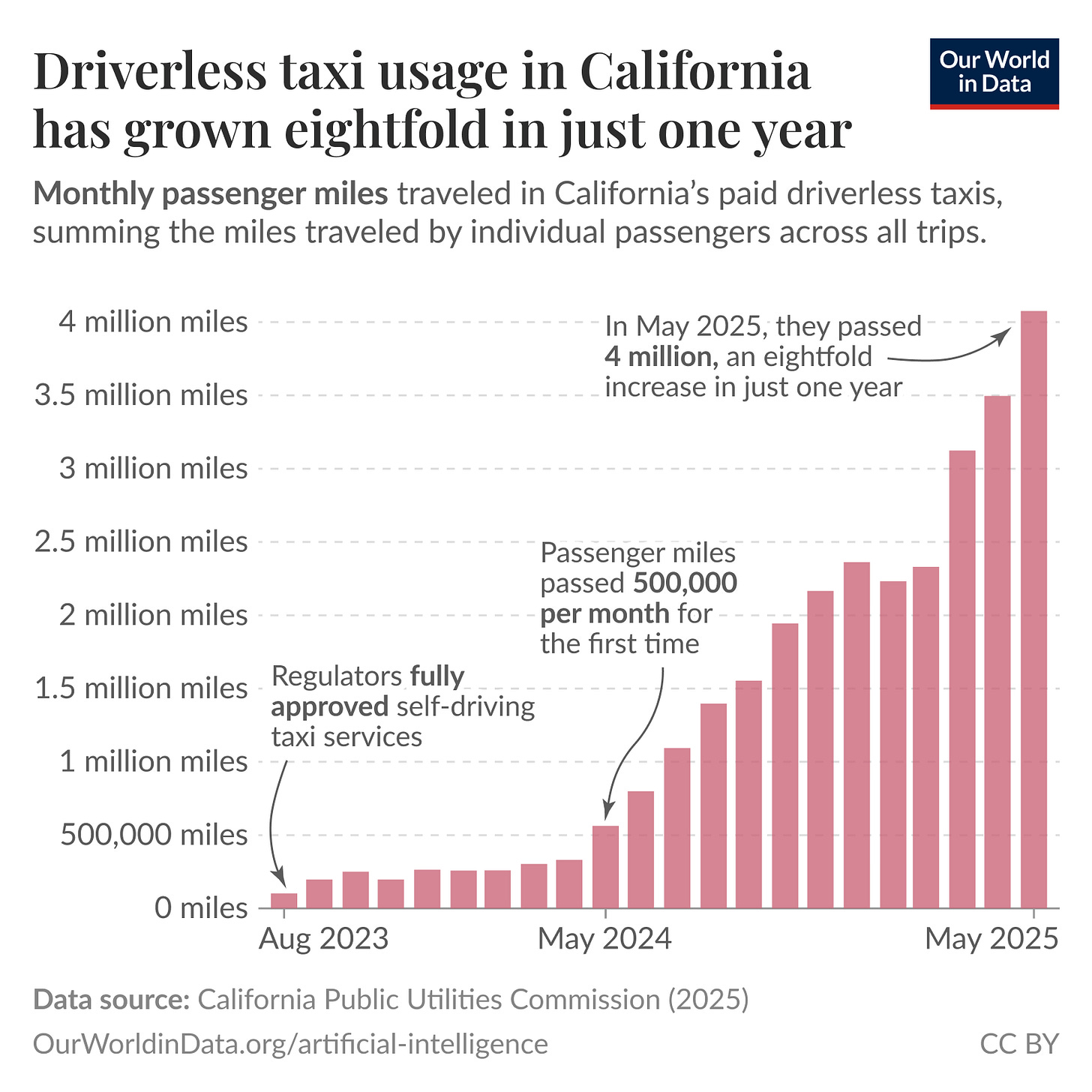Doomslayer: Progress Roundup
The children of the world are richer and better fed than ever before.
Announcements
We are trying to determine how frequently we should send out emails. You can help us by filling out this very short survey.
On October 18, Johan Norberg, the prolific author, historian, and Human Progress board member, will speak at a Cato University seminar for college and graduate students in Cambridge, Massachusetts. The day-long seminar will focus on cultivating an understanding of how openness to the world can advance peace and prosperity. All who complete the program will receive a $100 travel stipend. Interested students should apply by October 6.
Economics & Development
According to a recent World Bank report, the number of children living in extreme poverty fell to a record low of 412 million in 2024, down from 507 million a decade earlier.
Energy & Environment
Conservation and biodiversity
Koalas have a severe chlamydia problem—so severe that some experts speculate it could push the species toward extinction. Thankfully, Australian regulators have just approved a chlamydia vaccine for koalas that cut deaths by 65 percent in trials.
The number of blue iguanas—impressive reptiles native to Grand Cayman—has surged from fewer than 25 in 2002 to over 1,200 today.
The bison population of Yellowstone now numbers around 5,000, and a recent study found that soil and plants along their migration route have more microbes and nutrients than normal.
Energy & Natural Resources
A massive freshwater aquifer off the US Northeast coast, first detected in the 1970s, has now been sampled directly for the first time. This latest expedition should help determine whether the aquifer could one day serve as a usable water supply and offer clues about similar formations hidden elsewhere in the world.
Natural Disasters & Pollution
A recent analysis of flooding impacts in Europe between 1950 and 2020 found that flood-related deaths dropped about fivefold, while direct economic losses fell by two-thirds relative to GDP.
The ozone hole is still shrinking.
Food & Hunger
UNICEF reports that, for the first time in history, more children are obese than underweight. I urge you to resist being overly cynical about this: while obesity is a serious problem, it kills far more slowly than starvation.
Health & Demographics
The World Health Organization has declared that monkeypox is no longer an “international health emergency” following a general decline in cases across Africa.
The number of global leprosy cases in 2024 was 5.5 percent lower than in 2023 and 19 percent lower than in 2014.
Recent research in The Lancet found that death rates from non-communicable diseases (e.g., diabetes, heart disease, and cancer) fell in 150 of the 185 countries studied between 2010 and 2019.
According to a new CDC report, the age-adjusted death rate in the US fell by 3.8 percent between 2023 and 2024.
Two leading HPV strains are nearly extinct in Denmark thanks to widespread vaccination.
Tim Andrews, who broke the record for the longest time spent living with a pig kidney back in June, is reportedly still alive and off dialysis. Another brave recipient is well past the three-month mark.
Science & Technology
Researchers at Arc Institute and Stanford University used an AI model called Evo 2 to design 16 viable bacteriophages, that is, viruses that infect bacteria—the first time AI has generated whole living genomes. Niko McCarty has a great write-up explaining how they accomplished this feat and what it means for the future of synthetic biology.
I also recommend his and Saloni Dattani’s roundup of other recent developments in biology and medicine.
SpaceX has purchased 50 MHz within the S-band, a block of radio frequencies well-suited for satellite-to-phone service. The deal gives Starlink the technical capability to bring 5G to ordinary phones, putting pressure on terrestrial carriers and potentially ending mobile dead zones.
Apple’s new AirPods headphones will feature live speech translation.
Waymo has released 96 million driverless miles of safety data indicating that their robotaxis boast an 80 percent lower rate of injury-causing accidents compared to the average human driver. Put plainly, the faster these machines roll out, the fewer people will die.
If you’re skeptical of these statistics, the AI researcher Kai Williams recently dug into the details of every Waymo-involved accident over a six-month period and found that almost all of them were the human driver’s fault.
A few more robotaxi notes:
Waymo is now testing its vehicles at the San Francisco and San Jose international airports.
Here’s a neat video of a Waymo deftly navigating through a dust storm.
Our World in Data has an impressive chart of robotaxi adoption in California, which they plan to update every quarter.





